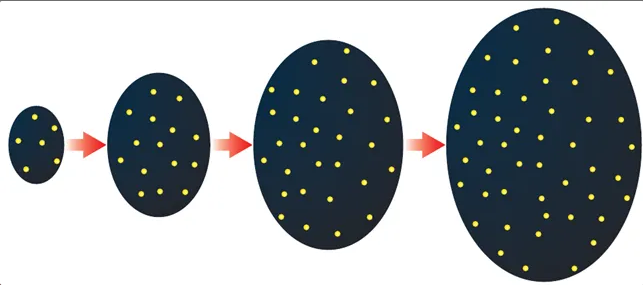Physics Light and the EM Spectrum + Astronomy
1/111
Earn XP
Description and Tags
Reflection/refraction, colour, lenses, EM spectrum, radiation & temperature, the solar system, mass/weight/gravity, orbits, stars, doppler effect & red-shift
Name | Mastery | Learn | Test | Matching | Spaced |
|---|
No study sessions yet.
112 Terms
Reflection
light ray bounces off a surface instead of passing through or being absorbed
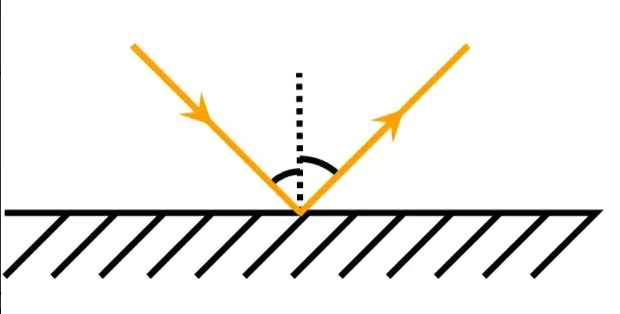
refraction
light ray changes directions as it passes from one medium to another
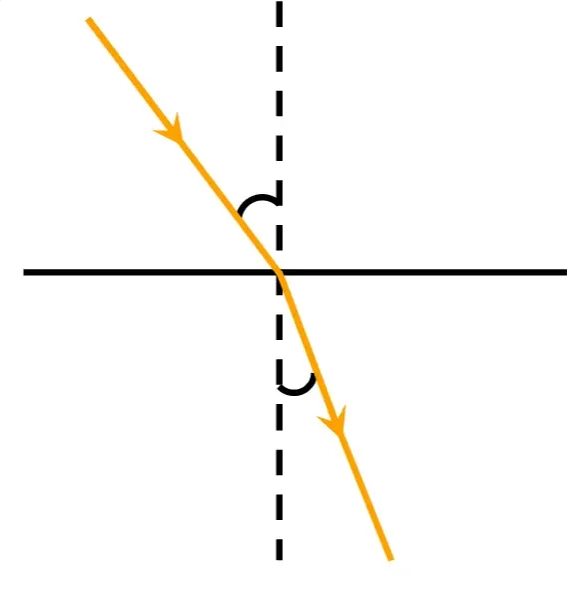
normal
line at a right angle to the line separating the two mediums (dotted line in diagrams)
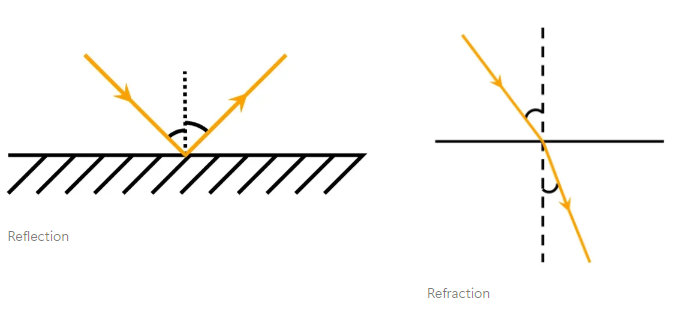
How to draw reflection on a curve
draw a tanglent (striaght line, in place of where a mirror would be)
draw the normal at 90’ to the tangent
use the normal to draw the diagram
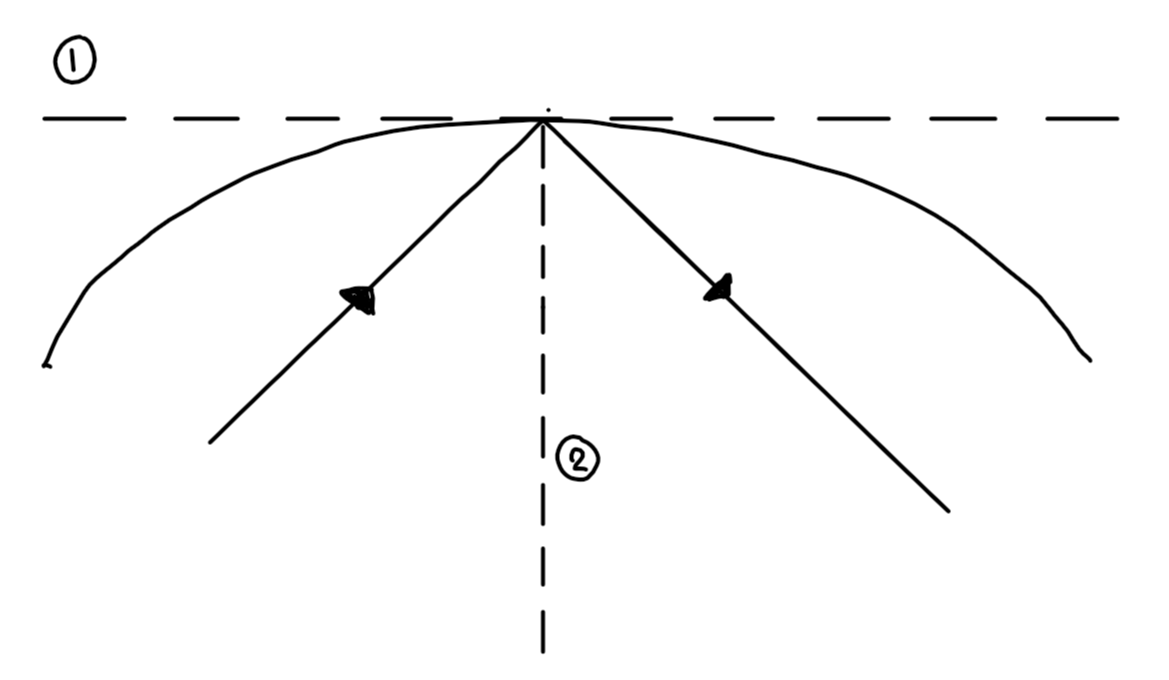
what do waves do when they slow down & speed up
bend towards the normal when they go slower
bend away from the normal when they go faster
frequency
number of waves to pass a point per second, aka number of vibrations per second (f)
wavelength
distance from one point on one wave to the same point on the next wave (λ)
what happens to the frequency, wavelength & speed as a wave refracts (deep water → shallow water)
wavelength decreases
frequency stays the same
therefore speed decreases (because of v = fλ)
therefore wave bends towards the normal
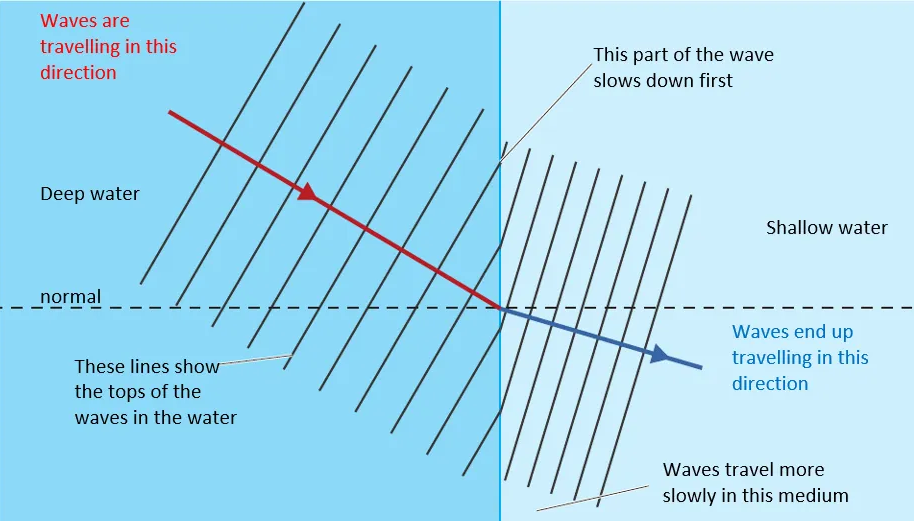
what happens to the frequency, wavelength & speed as a wave refracts (shallow → deep water)
wavelength increases
frequency stays the same
therefore speed increases (because of v = fλ)
therefore wave bends away from the normal
critical angle
the angle of incidence at which the refracted ray travels along the edge of the glass, at 90’ to the normal
when angle of incidence (i) = critical angle
angle of refraction (r ) = 90 degrees
luminous object
something that emits its own light
what happens when light hits (non-luminous) objects
some light is reflected off, and some is absorbed into it
the light reflected is the colour the object appears, and all the other colours are absorbed
e.g. a blue object would reflect blue light and absorb all other light
black & white light
white light is made up of all the colours
white objects reflect all colours off it
back objects absorb all light
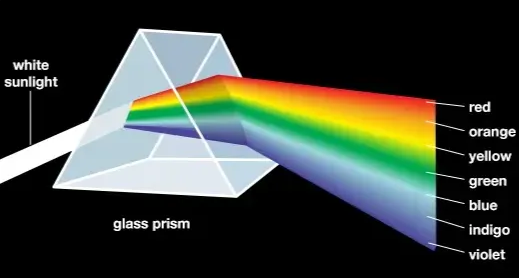
what happens if your shine coloured light on a different coloured surface
it will appear black, as the surface absorbs the light (as the light isn’t the colour of the surface), so there is no light to be reflected
example: If you shine red light onto a green surface it looks black. This is because the green surface will absorb the red light, and there is no green light to be reflected
2 types of reflection
specular reflection
flat surface
all light reflect evenly
keeps a clear image
e.g. a mirror
diffuse reflection
rough surface (even just slightly)
light reflects in different directions
doesn’t give a clear image

filters
another way of producing coloured light
they transmit (let through) certain colours of light and absorb others
remember the actual filter itself does still reflect, as we can see
what happens if two different coloured filters are used together
no light gets through
filter 1 transmits only one colour, and filter 2 absorbs that colour
lenses definition
pieces of transparent material shaped to refract light in a particular way
they operate by refraction, bending light as it passes through a different matierial
focal point
the point where the rays of light from a lens converge
focal length
the distance from the centre of the lens to the focal point
power (of a lens)
how much the lens bends light
a more powerful lens has a shorter focal length & is more curved
converging lens
a type of lens that brings light rays together
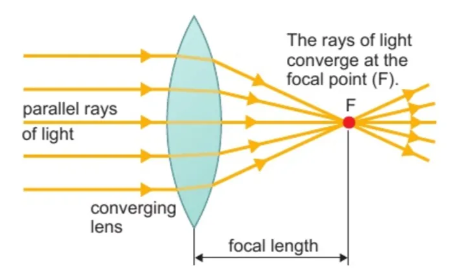
diverging lens
a type of lens that spread light ways apart
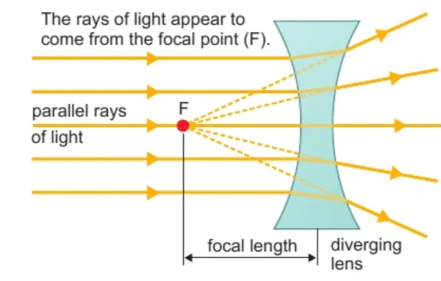
real image
formed when light rays from a point are made to converge onto another point
can be captured & projected onto a screen
e.g. looking at a distant object using a converging lens
virtual image
light rays appear to have come from a place, and don’t converge
can’t be captured / projected
e.g. looking at a nearby object using a converging lens
lenses ray diagrams
they are a model of what happens, so we make the model simpler than the real situation
concentrate on what happens with just a few rays of light
show the direction changing in the middle of the lens
converging lens ray diagram (with a real image)
a ray parallel to the optical axis passes through the focal point on the other side of the lens
a ray that passes through the focal point emerges parallel to the optical axis on the other side (opposite of #1)
a ray that passes through the centre of the lens continues with no change in direction
the image is at the point at which these three lines meet, on the other side of the lens to the object
the image will be real as long as the object is in front of the focal point

converging lenses creating virtual images
if the object is in front of the focal point, it will form a virtual image, which will appear:
on the same side of the lens as the actual object
the same way up as the object
magnified
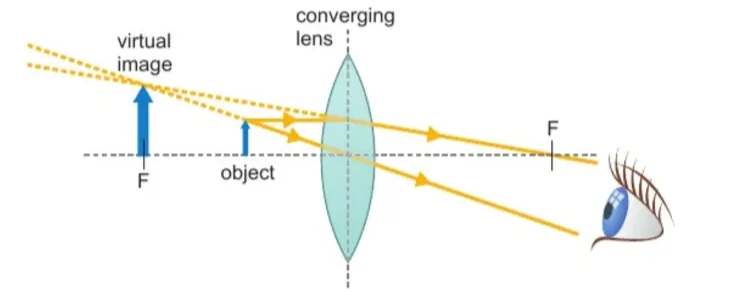
diverging lens ray diagram
a ray parallel to the optical axis emerges as through it was coming from the focal point
a ray that passes through the centre of the lens continues with no change in direction
the virtual image is at the point at which these two lines meet, on the same side of the lens to the object
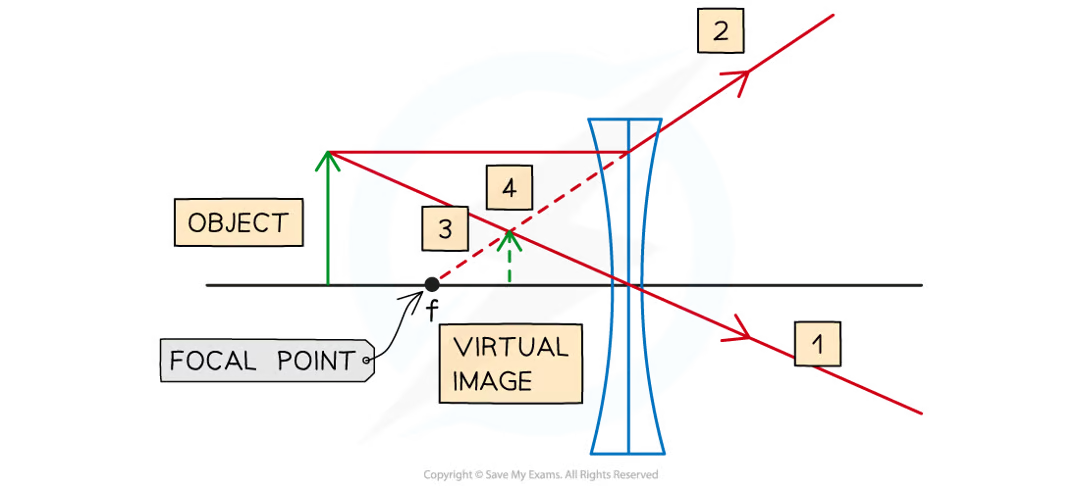
diverging lenses creating virtual images
diverging lenses always create virtual images, which will appear:
on the other side of the lens as the actual object
smaller than the actual image
what type of waves are em waves
transverse waves - perpendicular oscillations (up & down)
what are em waves created by
the vibrations of charged particles
which two fields do em waves create oscillations in
electric and magnetic (hence electromagnetic)
how fast do em waves travel (in a vacuum)
they all travel at the speed of light
types of em waves (shortest → longest wavelength)
radio waves
microwaves
infrared
visible light (ROYGBIV backwards)
ultraviolet
x-rays
gamma rays
which types of em waves can our eyes sense & why
our eyes can only sense visible light
because the cells in the retina of the human eye are only sensitive to those wavelengths
uses of radio waves (3)
broadcasting
communications
satellite transmissions
uses of microwaves (3)
cooking
communications
satellite transmissions
uses of infrared radiation (6)
cooking
thermal imaging
short-range communications
optical fibres
(tv) remote controls
security systems
uses of visible light (3)
vision
photography
illumination
uses of ultraviolet light (4)
security marking
fluorescent lamps
detecting forged bank notes
disinfecting water
uses of x-rays (3)
observing the internal structure of objects
airport security scanners
medical x-rays
uses of gamma rays (2)
sterilising food/medical equipment
detection & treatment of cancer
dangers of microwaves
internal heating of body cellsd
dangers of infrared radiation
skin burns
dangers of ultraviolet light
damage to surface cells / the eyes, leading to skin cancer / eye conditions
dangers of x-rays
mutation / damage to cells
dangers of gamma rays
mutation / damage to cells
temperature
a measure of the amount of thermal energy in an object
the temp of an object affects the thermal energy it emits
what happens as the temp of something gets higher
the intensity of emitted radiation gets higher
the average wavelength of emitted radiation gets shorter
the average frequency of emitted radiation gets higher
power (in temperature) & its unit
the amount of energy per time, measured in watts (w)
1 watt = 1 joule per second
1W = 1J/1s
what does it mean when radiation is emitted
energy is transferred away from an object
what does it mean when radiation is absorbed
energy is transferred towards an object
what needs to happen for an object to stay at the same temperature
it needs to emit the same amount of energy as it absorbs in a certain time
aka it needs to emit radiation at the same power as it absorbs
what happens if more radiation is emitted than absorbed
the object loses more energy than it gains
temperature decreases
after a while it stars emitting less radiation and becomes balanced again
temperature stops decreasing and stays the same
what happens if less radiation is emitted than absorbed
the object gains more energy than it loses
temperature increases
after a while it stars emitting more radiation again so it becomes balanced
temperature stops decreasing
what do greenhouse gasses e.g. carbon dioxide do to earth’s temperature
they are gasses in the atmosphere that absorb energy radiated from the surface instead of letting it escape to space, creating with greenhouse effect and warming earth up
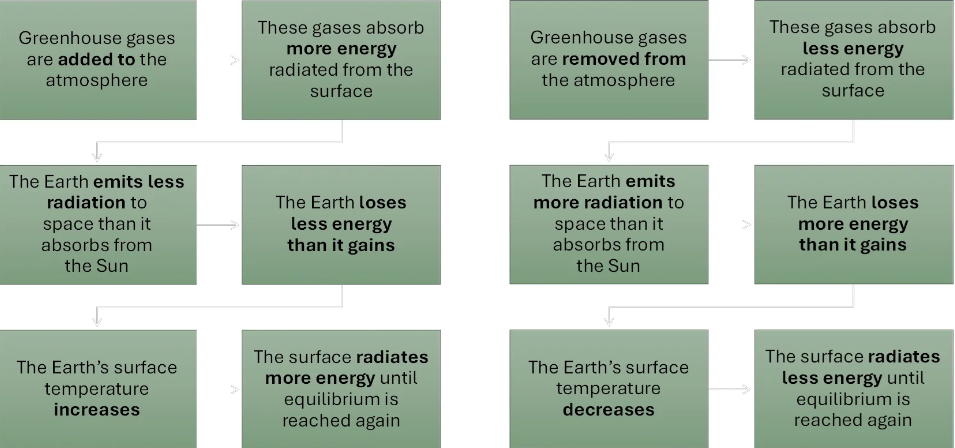
the sun
the star at the centre of the solar system that radiates energy
planets
celestial bodies moving in orbit around the sun at different distances & speeds
8 planets in solar system: 4 rocky/terrestrial & 4 gassy/giant
different sizes, but all large & rounded
natural satellites
celestial bodies that orbit other celestial bodies (planets or asteroids)
also known as moons
dwarf planets
small planetary-mass objects in orbit around the sun
like planets but smaller
asteroids
small rocky bodies orbiting the sun
there are load in the solar system (over 1 mil)
comets
icy objects that move in an elliptical orbit that can take a long time & take them very far away from the sun
lots in solar system but not as many as asteroids (4,000)
name the 8 planets, starting with the one closest to the sun
mercury
venus
earth
mars
jupiter
saturn
uranus
neptune
geocentric model
earliest model of the solar system
earth in the centre, everything else orbiting around it in circles
planets also going in small circles in their orbits
made by ptolemy
created just from observing the planets with eyes (no telescopes) and charting them
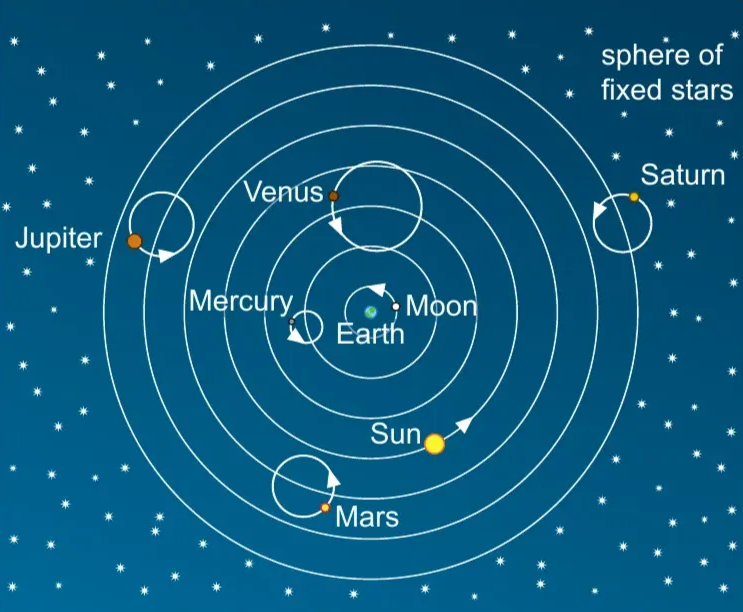
heliocentric model
second, more accurate (but still not completely accurate) model of the solar system
sun in the centre, other planets orbiting in circles around it. moon orbits the earth but no other planets have moons
created by copernicus
created with the use of telescopes, which ptolemy didn’t have for the geocentric model
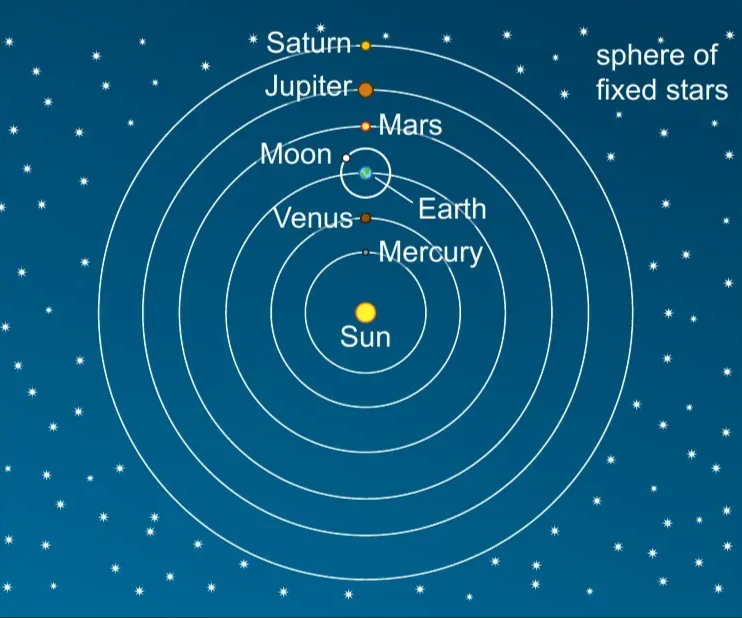
our current model
the same as the heliocentric model, except for a few differences:
planets orbit the sun in slightly elliptical orbits, instead of perfect circles
other planets also have natural sattelites (moons) orbiting around them, not just us
more planets - uranus and neptune, which aren’t on the heliocentric model
Mass
the amount of matter in an object measured in kilograms (kg)
Weight
the force due to gravity experienced by an object in newtons (N)
Equation linking weight, mass & gravity
w = mg
w = weight in N
m = mass in kg
g = gravitational field strength in N/kg
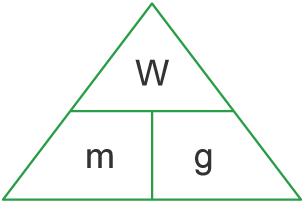
2 factors that effect gravity & how they effect it
mass of planet
the more mass a planet has, the larger the gravity will be on the surface
how far away the object is from the planets centre - so radius of the planet
the smaller the radius, the larger the gravity on the surface
how does mass effect gravity
a larger mass causes gravity’s pull to be stronger
How does radius of a planet effect its gravity
because objects will be closer to the core (the centre of mass)
orbits of planets (what shape, around what)
slightly elliptical, around the sun
orbits of moons (what shape, around what)
orbit around planets or asteroids, orbit varies - it can be circular or elliptical
orbits of comets (what shape, around what)
very elliptical orbit, around the sun
low earth orbit of an artificial satellite
close to the earth’s surface
takes short time to complete an orbit - around 2hr
used for imaging and mapping
polar orbit of an artificial satellite
like a low earth orbit but around the north & south poles
eventually will pass over all parts of the earth (because of the earth’s spin)
used for monitoring the poles and weather forecasting
geostationary orbit of an artificial satellite
high orbit
always over the same place on the earth
takes 24h to complete 1 orbit
used for broadcasting and transmissions
how does height effect orbits of an artificial satellite
the higher the satellite is above the surface, the slower it orbits
centripetal force
the force that keeps satellites in their orbits
points towards the centre of the orbit - the centre of the earth
constantly changes the velocity of a satellite
what happens if a satellite fires its rockets to speed up
it will speed up and enter a higher orbit, then slow back down again
what are the colour of stars determined by
the surface temp of the star
cooler stars are yellow, hotter ones are red, the hottest are white
life cycle of stars
nebula
protostar
main sequence star
red giant or red supergiant
shell of gas or supernova
white dwarf or either neutron star or black hole
nebula
a cloud of dust and gas
protostar
the gravity within the nebula pulls particles together, forming a hot ball of gas
main sequence star
the protostar becomes stable once it’s hot enough (inward force due to gravity = outward force from expanding gasses)
the star is born
this is what our sun is
red giant
star starts to run out of fuel and die
the core shrinks and heats up
the outer part of the star expands
red because of the outer surface cooling
red supergiant
star starts to run out of fuel and die
core shrinks and heats up
outer part of the star expands
red because of the outer surface cooling
bigger than red giant
shell of gas
comes from a red giant
star runs out of fuel
core collapses and gets denser
outer part of the shell gets thrown off
also known as a planetary nebula
supernova
comes from a red supergiant once reactions inside it ends
core suddenly collapses then rebounds, causing a giant explosion
outer remnants of the star are ejected into space
white dwarf
comes from a shell of gas (red giant)
core of the star keeps collapsing until all the energy is concentrated into a very small space
very hot
neutron star
comes from a supernova (red supergiant)
created if the mass after the explosion isn’t more than 4x that of the sun
dense body that is formed in the centre of the supernova
ball of neutrons squished together after everything collapses
black hole
comes from a supernova (red supergiant)
created if the mass after the explosion is more than 4x the sun’s mass
star keeps collapsing, forming an extremely dense point that not even light can escape from
doppler effect
if the sound source moves towards the observer, the observed frequency is higher, and the observed wavelength is shorter
if the sound source moves away from the observer, the observed frequency is lower, and the observed wavelength is longer
red-shift
as a galaxy gets further away from earth, the wavelength of its light becomes longer, and objects appears red (as red has the longest wavelength)
blue-shift
as a galaxy gets closer to earth, the wavelength of its light becomes shorter, and objects appear blue (as blue has the shortest wavelength)
spectral lines in red-shift & what it means
the spectral lines on the emission spectrum shift towards the red side
this means that the further away a galaxy is, the more red-shifted it is
so by seeing how spectral lines for light given out by galaxies have shifted, you can work out how far away they are
it also shows that the universe is expanding
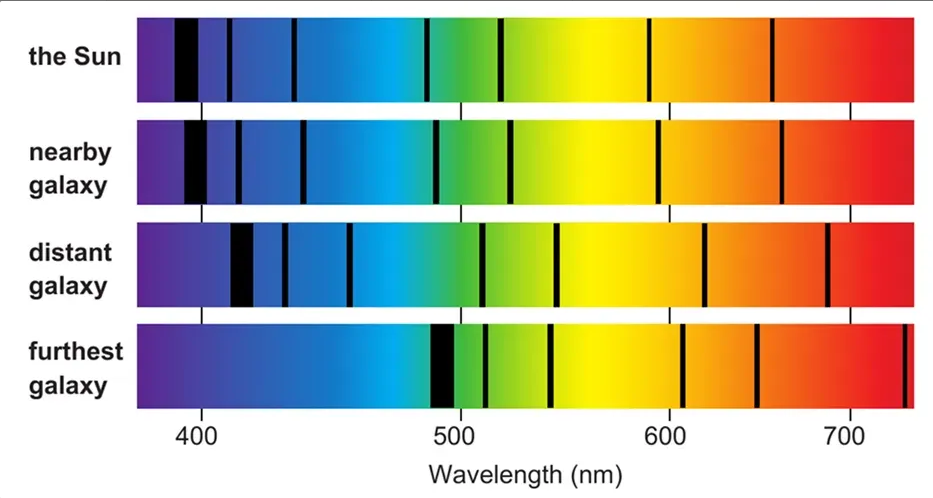
big bang theory
all matter in the universe was formed at once
matter in the universe gets more spread out over time
universe began about 13.8 billion years ago
universe is expanding
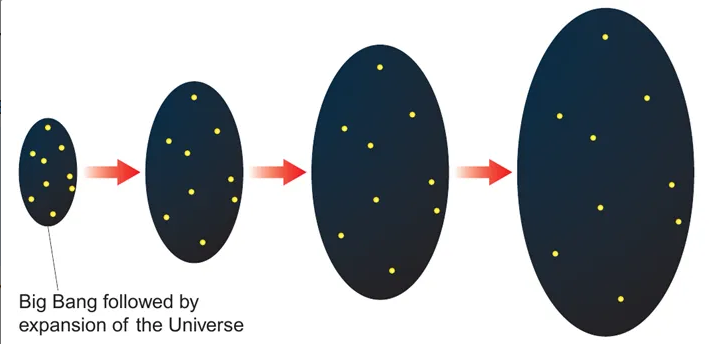
steady state theory
matter is continuously being created
universe has always existed - has no start
universe is expanding
